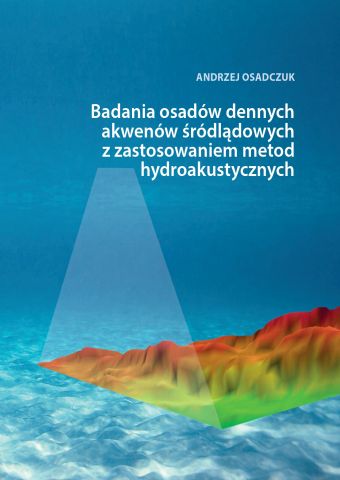
ISBN: 978-83-7972-112-2
ISBN (online): 978-83-7972-810-7
ISSN: 0860-2751
OAI
DOI: 10.18276/978-83-7972-810-7


Issue archive / T. (MXXXVIII) 964
| Year: | 2017 |
| Field: | Field of Natural Sciences |
| Discipline: | earth and environmental sciences |
| Authors: |
Andrzej
Osadczuk

Uniwersytet Szczeciński |
Information
Date of release of electronic version under CC-BY-SA license: September 2024
Issue File
Abstract
INVESTIGATIONS OF BOTTOM SEDIMENTS OF INLAND BASINS USING HYDROACOUSTIC METHODS
The different kinds of hydroacoustic methods, which are successfully used in marine research, have not yet been as widely used in the inland sedimentary basins. Most likely this is due to lack of sufficient knowledge about possible applications of these methods and ways of interpretation. Hydroacoustic systems that are currently produced are gaining better performance and smaller size. They are increasingly being manufactured as a portable and affordable. It enables to install these devices on small motorboats and carry out research in the shallow inland basins, such as lagoons, lakes, rivers, etc.
Each of geophysical methods, including acoustic methods, has a number of benefits and limitations of their applications. With this in mind, the author would like to acquaint potential users with the capabilities of various hydroacoustic methods. The book is addressed to all those whose research focuses on the bottom of the different inland water bodies. In particular, the author addresses this book to representatives of the natural sciences, representing such disciplines as geology, geomorphology, physical geography and hydrobiology. The author hopes that the book can be useful also for underwater archaeologists, whose research focuses on lakes and other inland water bodies.
The main aim of this book was to provide information that help to understand the essence of hydroacoustic methods and benefits that result from their use, but also to familiarize with the limitations of these methods in a variety of applications.
All information included in the book are both the result of the review of scientific literature and perpersonal experience gained during the research work on several Polish inland water bodies. Among others, these studies were carried out in order to evaluate the usefulness of methods that use sound waves as a carrier of information for the investigations of the bottom of this type of sedimentary basins. The idea was to determine how the hydroacoustic methods can be useful in geological and paleogeographic studies of lakes and other inland basins. During the surveys there were used hydroacoustic systems such as low and high frequency echosounders, the Rox- Ann system for sediment classification, a side-scan sonar, and sub-bottom profiler. These devices have been used to recognize the bottom morphology, its internal structure and the type of sediments. Surveys were conducted on several different types of reservoirs: deep and shallow lakes in northern Poland (Wigry, Drawsko, Miedwie, Jeziorak, Szurpiły), the Szczecin Lagoon, the Świna Strait and Vistula River. The subsequent chapters of the book provide basic information about hydroacoustics and hydroacoustic methods and the results of own research. In the final chapter the author has evaluated the usefulness of various hydroacoustic methods for palaeogeographical, sedimentological and archaeological studies in different inland sedimentary basins. The attention was paid to the benefits as well as limitations of these methods. The summary section contains a number of practical advice and tips that are recommended to take into account when hydroacoustic surveys are conducted in such basins.